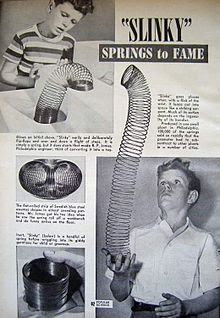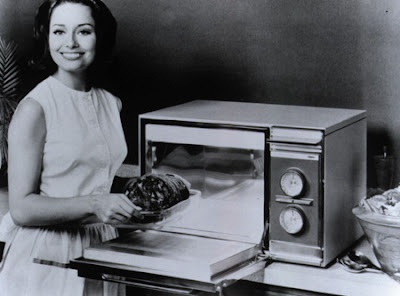13 Technology Found In Not Intentional
1. Penicillin
You may already be familiar with Alexander Fleming, Scottish scientist who conducted research on the attenuated bacteria, called staphylococci or staphylococci. The truth is that when he returned from a vacation in 1928, he found one of his experiments had been overgrown cup mushrooms, which upset him and threw it. At that time he had not realized that the bacteria Staphylococcus unable to live in the overgrown fungus fungal.
After Fleming re-examined and found that the mushroom can inhibit the growth of bacteria, he later published his findings, but did not get much attention. Then in 1945, after more research done by some other scientists, it is believed that the new penicillin could be produced on an industrial scale, so this gave way for the treatment of bacterial infection or inflammation to the present.
2. Microwave Oven
In 1945 Percy Lebaron Spencer, an American engineer and inventor, was busy working in the factory magnetron, a device used to generate microwave radio signals that an early form of radar. Radar is an incredibly important innovation during the war, but the use of microwaves to cook food was unintentional.
When he was standing near a magnetron is alive, Spencer found that chocolate bar melted in his pocket. His mind was sharp immediately understood that it was due to microwaves. Then he tried the popcorn seeds, then the egg to explode. The first microwave oven weighed about 340 pounds with a size of a refrigerator.
3. Ice cream cone
This story is a perfect example of an accidental discovery, and a rare chance encounter that gave effect to the whole world. Dan is a sweet meeting.
In early 1904, ice cream was served on a plate. Until one day at the World's Fair that year, in Saint Louis, Missouri, two foods that seem unrelated to the inevitable connected together.
At the moment it is very hot at the World's Fair in 1904, sells ice cream with ice cream depot fast that ran out of plates. Depot next to the ice cream was not so lucky, the seller Zalabia - a kind of wafer thin waffle from Persia - and the depot owners proposed an idea for zalabia rolled into a cone and put a piece of ice cream on top. So the ice cream cone was born - and until now we still find ice cream cone, as modern as any ice cream creation.
4. Champagne
According to many Dom Pierre Perignon champagne regarded as the inventor. Benedictine monks even though the 17th century did not mean it, that makes wine with bubbles in it-because in fact he has spent many years trying to prevent that from happening. The wine is full of air bubbles is considered a sign of poor wine making process.
Hope Perignon actually to meet French officials preferred form of white wine. Since black grapes were easier to grow in the Champagne region, he found a way to squeeze out white juice from black grapes. But because relatively cold climate in Champagne, the wine was fermented finally after two seasons, until his second year in the bottle.
The result is a wine full of bubbles of carbon dioxide gas by Perignon tried to clear but failed. Fortunately, a new wine that eventually became the top choice among aristocrats, officials in both French and English.
5. Post-It note paper
The discovery paper Post-It notes that simple is a collaboration that happens between a poor science to a church that desperate. In 1970, Spencer Silver, a researcher with the American company 3M, had been trying to formulate a kind of strong glue, but ended in the creation of a very weak glue that could be removed easily. He introduced his invention at 3M, but nobody cares.
Four years later, Arthur Fry, a 3M colleague and member of Silver in the choir at his church, disturbed by the fact that little paper tucked in the books as a sign of spiritual songs page limit always falls when the book is opened. He then asked for help from Spencer Silver to use its findings, the weak glue book pages as a boundary marker. Marker in the form of paper paste adhesive findings Spencder Silver works perfectly, and he then sold the idea to 3M. Marketing trials began in 1977, until the post-it is known around the world today.
6. Potato chips
In 1853, at a restaurant in Saratoga, New York, someone who was having dinner, Cornelius Vanderbilt, looks very chatty as repeatedly refused to eat fried foods ordered. He complained it was too thick and fried too wet.
Having restored a few dishes and then more dilute potato pieces, head cook George Crum decided to fry the thinly sliced ??potatoes are fried in lots of oil, so the potato chips today. Vanderbilt initially protested the business head cook, he fries were too thin to be stabbed with a fork, but after a few trials, potato chips then became a favorite, and soon everyone in the house to eat the order. So on the menu listed "Saratoga Chips", which became known to the world.
7. Slinky
 You surely know this one toy, a roll of wire that is colored by the jangle-shaped when shake. Originally this toy is just a decoration on a desk an expert mechanic, Richard James, who some time in 1940 that when spring arrives, tripped and rolled across the floor after stepping on the object so it must lie sick.
You surely know this one toy, a roll of wire that is colored by the jangle-shaped when shake. Originally this toy is just a decoration on a desk an expert mechanic, Richard James, who some time in 1940 that when spring arrives, tripped and rolled across the floor after stepping on the object so it must lie sick.
.JPG)
After several prototypes, slinky finally ready to be introduced in toy stores in 1948, which then became one of the most popular toys of the icons of all time. James's wife, Betty, was the one who suggested the name "Slinky", and as CEO of the company since 1960. Over 250 million Slinky has been sold throughout the world, and even slinky used as mobile radio antennae during the Vietnam War.
8. Pacemakers

Such as penicillin, this is another accidental discovery that has saved the lives of many people today. An American engineer, Wilson Greatbatch, is working with a device that records heart rate irregular, when he inserted a wrong type of resistor into his invention. The circuit pulsed, then a pause, then pulsed again, prompting Greatbatch to compare this reaction with human heart and use it on the first pacemaker that can be implanted in the world or implanted into the human body.
Prior versions may be used in humans implanted after 1960, pacemakers have been based on the external model invented by Paul Zoll in 1952. This tool measures a television and distributing electric shocks are adjusted to the patient's body, which often cause skin burns. Greatbatch also developed inventions using iodid lithium battery cells to power his pacemaker.
9. Super strong glue (Superglue)

Materials are more sticky. This one is famous for its high adhesive power, not like Post-It Notes above. Super strong glue created in 1942 when Dr. Harry Coover was trying to isolate a clean plastic material to make up the firearms. While he was working with chemicals cyanoacrylates, immediately after contact with dew polymerized material makes all the chemicals in the experiment tied together. For Coover experiment failed, and research continues.
Six years later, Coover worked at a chemical plant in Tennessee, and realize the potential of a substance when they were testing the heat resistance of cyanoacrylates, known previously that the glue-glue does not require heat and pressure to form a strong bond. So, after a certain amount of commercial refinement, Superglue or "Alcohol-Catalyzed Cyanoacrylate Adhesive Composition" (composition of materials Cyanoacrylate glue catalyzed by alcohol) was born. Glue that is used later to deal with the wounded soldiers in the Vietnam War - the glue that can be sprayed on open wounds, stemming bleeding and facilitate the transport of the soldiers. Lem has saved many lives of victims injured by firearms.
10. Saccharin
Saccharin, the oldest artificial sweetener, accidentally discovered in 1879 by a researcher named Constantine Fahlberg, a man who once worked at the Johns Hopkins University in the laboratory professor Ira Remsen. Fahlberg discovery began when he forgot to wash his hands before lunch, which previously had been thronged with similar chemicals in the laboratory. Chemicals that subsequently led to the bread he ate a strange sweet taste.
In 1880, the two scientists jointly published the discovery, but in 1884, Fahlberg obtained a patent and began mass producing saccharin without Remsen material. The use of saccharin will not expand if not for the limited use of sugar during World War I, and her fame increased during the 1960's until the 1970's because it is used by the factory Sweet'N Low and soft drinks (soft drinks) to the diet.
11. Vulcanized rubber (tire rubber)
Christopher Columbus, discoverer of America, was the first to introduce a rubber ball from the West Indies to Europe. Rubber material is great but a foul-smelling substance sangit, hardens when cold and too sticky when warm and seem not be used for practical purposes.
Three hundred years later Charles Goodyear set up a company and strive to make useful materials. Previous seven years, he tried to cultivate rubber material with magnesium oxide, bronze powder, nitric acid and lime adhesive, but still no results.
Then, in an auspicious day in 1839, he cleaned his hands of the spread powder, which consists of a mixture of rubber and sulfur. Powders and fell into a furnace on fire. When the rubber melts, it reacts with the sulfur material. This is the first time vulcanized rubber or rubber tires created, and until now you can sleep soundly in a car because of this accident.
12. X-ray machines
In 1895, German physicist, Wilhelm Conrad Rontgen, was trying to find a way to be able to see out of a cathode ray tube glass is fully covered by a black cardboard. He realized it was impossible but he found something more interesting about it.
He tried to put various objects in front of the device, but the surprise was that he saw the bones in the hand itself, then, the results were projected onto the wall. Chest X-rays are aware that it can penetrate solid objects as well. Immediately, he called yahg rays can penetrate it with the name of an x-ray or we know well the X-ray - as the name suggests. Today, these tools have become a standard tool in the health hospitals.
13. Viagra

If you are a person with erectile dysfunction, you should be grateful to the researchers of Merthyr Mydfil, a town in Wales. In 1992, they conducted several clinical trials to test a new drug that was originally expected to treat hypertension. The experiments have failed very badly as no sightings of their blood pressure levels to normal point. But when the measured blood pressure is rising, they see no other go up - you must know what I mean (he he he). The project would have stopped if if the side effects do not show up. Now this drug is known by the name "Viagra" drug "opponents of gravity" which is used to produce a "steel rod" strong.
"13 Technology Found In Not Intentional: Penicillin, Microwave Oven, Ice cream cone, Champagne, Post-It note paper, Potato chips, Slinky, Pacemakers, Superglue, Saccharin, Vulcanized rubber, X-ray machines, Viagra"











































.JPG)







